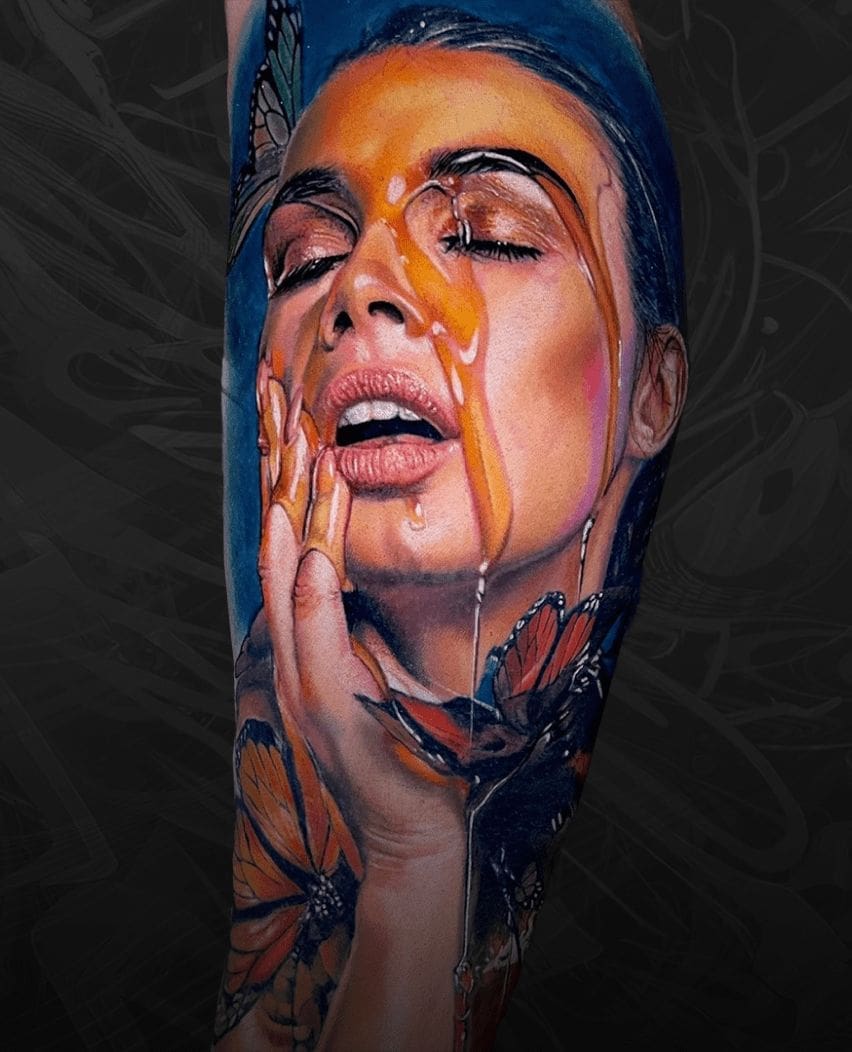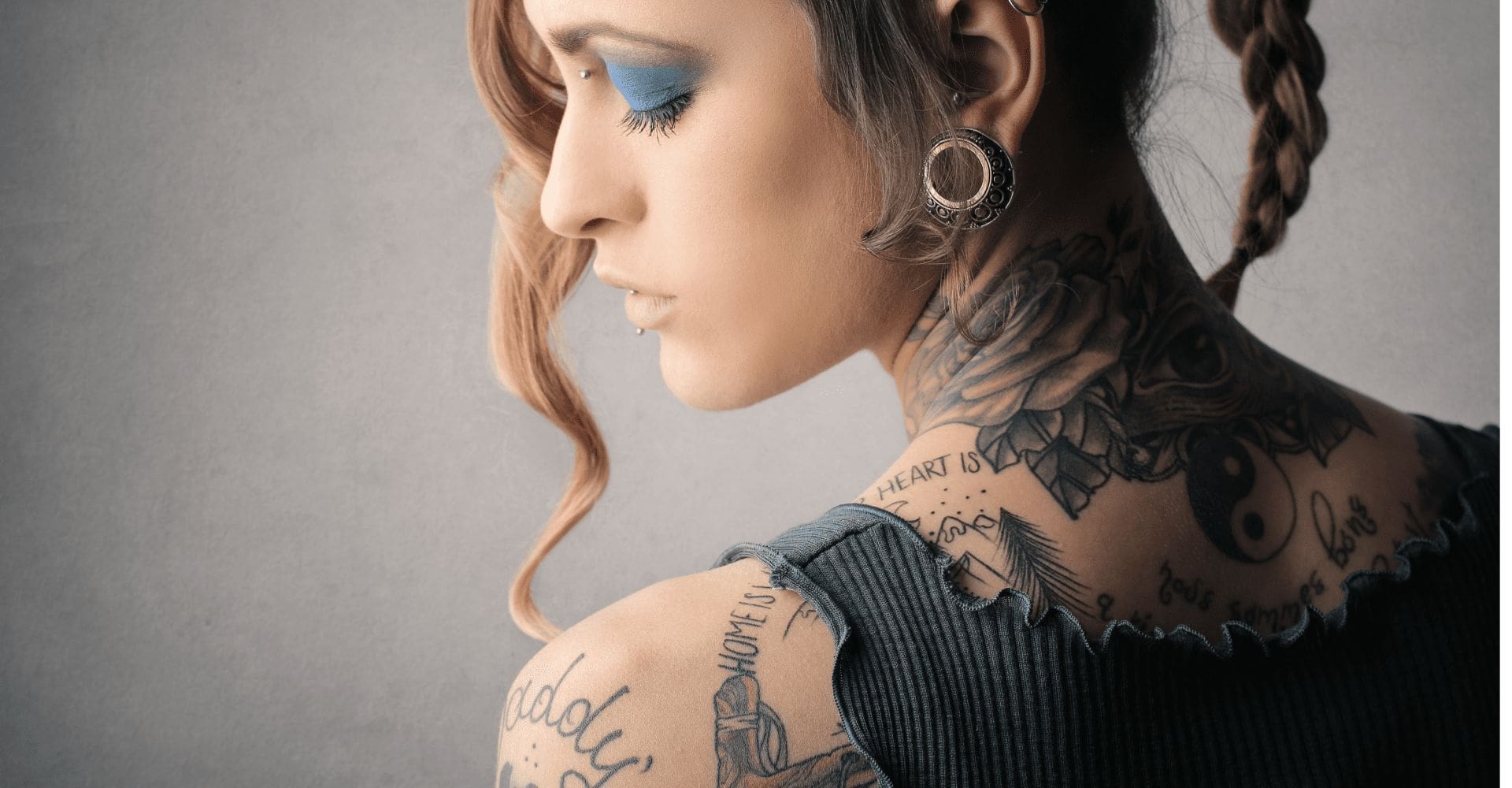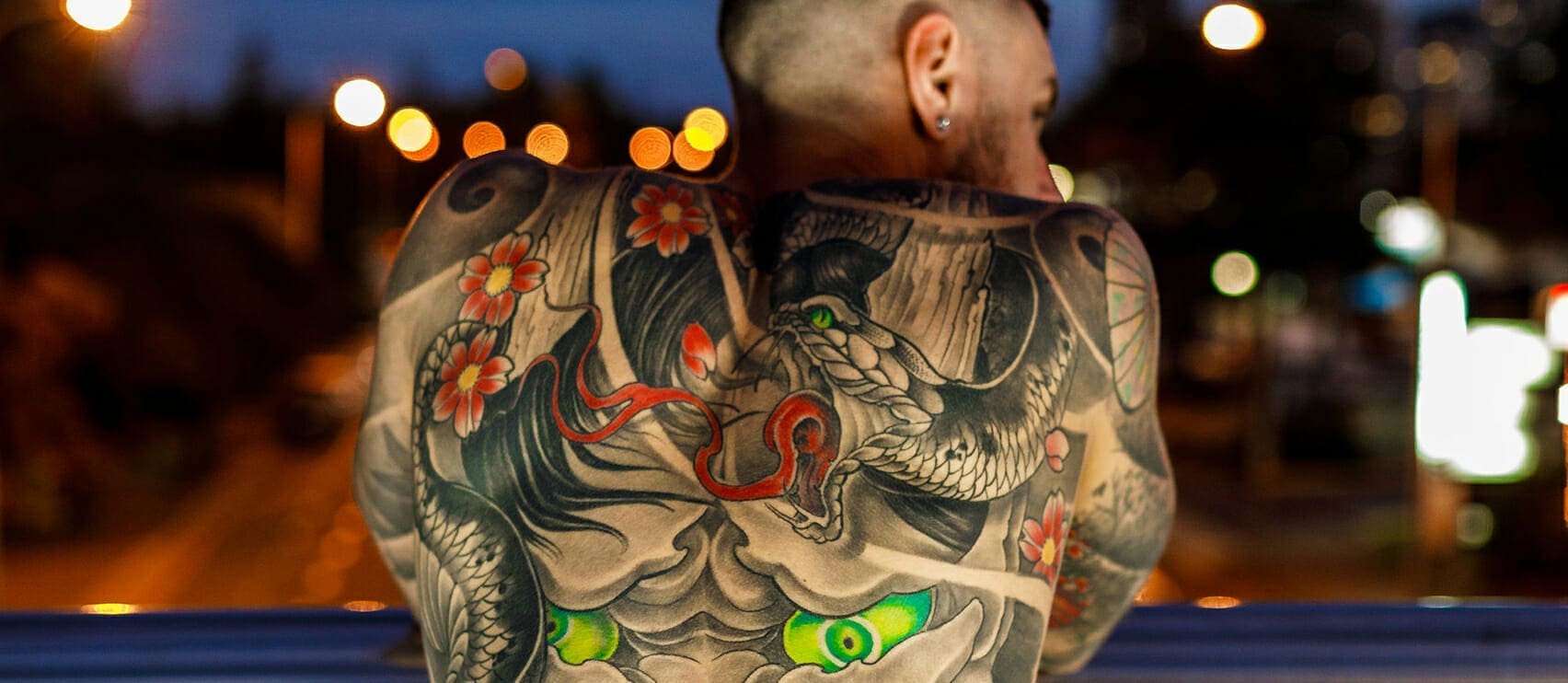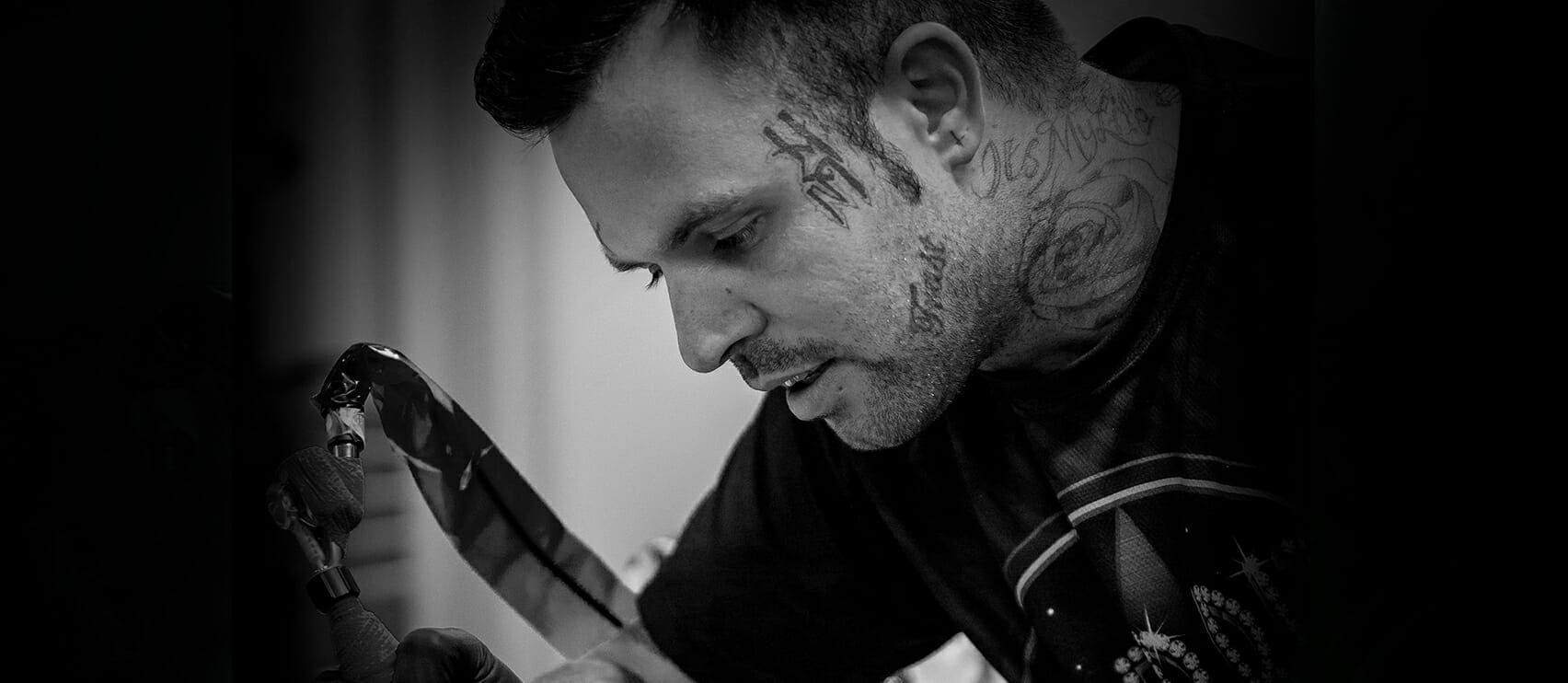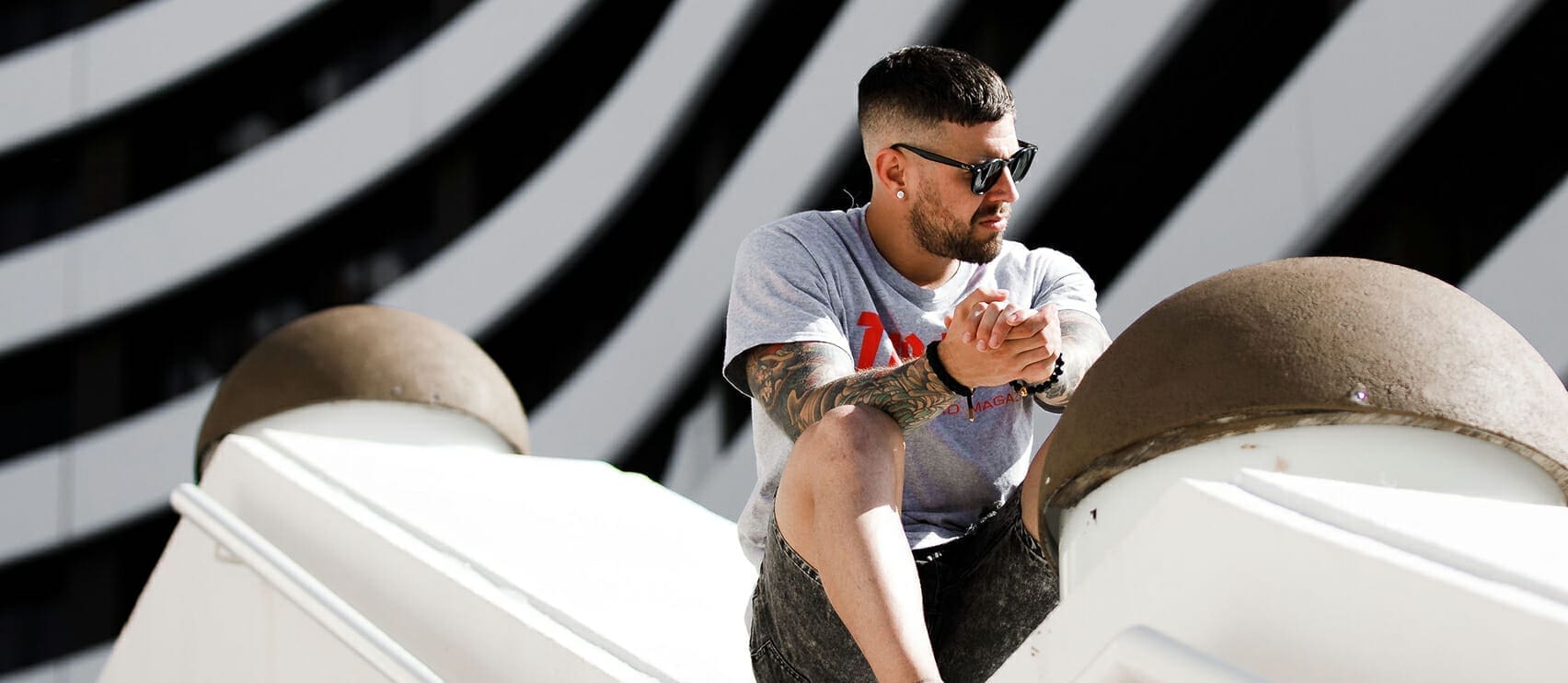While traditional Thai tattoos, also known as Sak Yant, date back to the 9th century, it wasn’t until the 1990s that this tattoo style became popular in other countries. Celebrities such as Angelina Jolie, Ryan Phillippe and Brooke Shields all have Sak Yant tattoos, raising awareness for this style in the Western world.
In other parts of Asia, such as Japan, tattoos are considered taboo due to the related gang crime stigma. However, in Thailand, the history of tattooing is strongly linked to the Buddhist religion and monks. This article will dive deep into the history of traditional Thai tattoos, including what Sak Yant tattoos are, traditional tattoo tools and the traditional Thai tattoo meanings.
The History of Thai Tattooing
The history of Sak Yant tattoos dates back to ancient times. They are believed to have originated in what is now the Khmer Empire, which existed from the 9th to 15th centuries and covered parts of modern-day Thailand, Burma, Cambodia, Laos and Vietnam.
Throughout the centuries, the popularity of Sak Yant tattoos grew, and they became an important part of the culture and traditions of Southeast Asia. Today, these tattoos are deeply rooted in those countries' spiritual and religious beliefs.
A strong display of what these tattoos mean to the Thai people happens every year in March. During this time, more than 10,000 people head into Wat Bang Phra, a Buddhist temple outside of Bangkok known for its magic tattoos and amulets. Those who go to the temple visit in the morning for a festival revolving around the Sak Yant traditional tattoo.


Monks lead the ceremony, which involves prayers and chants. These become vibrant as participants go into ‘trances’. It’s said that at this point, the followers are overwhelmed with their tattoos, becoming the mythical animals imprinted on their skin in traditional Thai style.
Tattooing a Sak Yant design
Traditionally, a Sak Yant tattoo design is chosen by a monk, depending on the wearer's position within the community and their profession. If you were to get a Sak Yant tattoo in Thailand, the best place to go is the Wat Bang Phra temple, as it’s believed that your tattoo is protected if you get it done there.
Traditionally, a Sak Yant tattoo was placed on the skin using a bamboo rod with a needle. The needle is used to imprint the ink (created from a mix of charcoal and snake venom, alongside other ingredients thought to be sacred) into your skin.
However, these days, snake venom is not an ingredient that can be found in modern Thai tattoo studios. If you were to visit a Celebrity Ink tattoo studio in Thailand, you would be given the choice between the stick and poke method or machine-created designs. If you chose stick and poke, the artist would use stainless steel rods and modern ink rather than the traditional bamboo method.
Traditional Thai Tattooing Tools
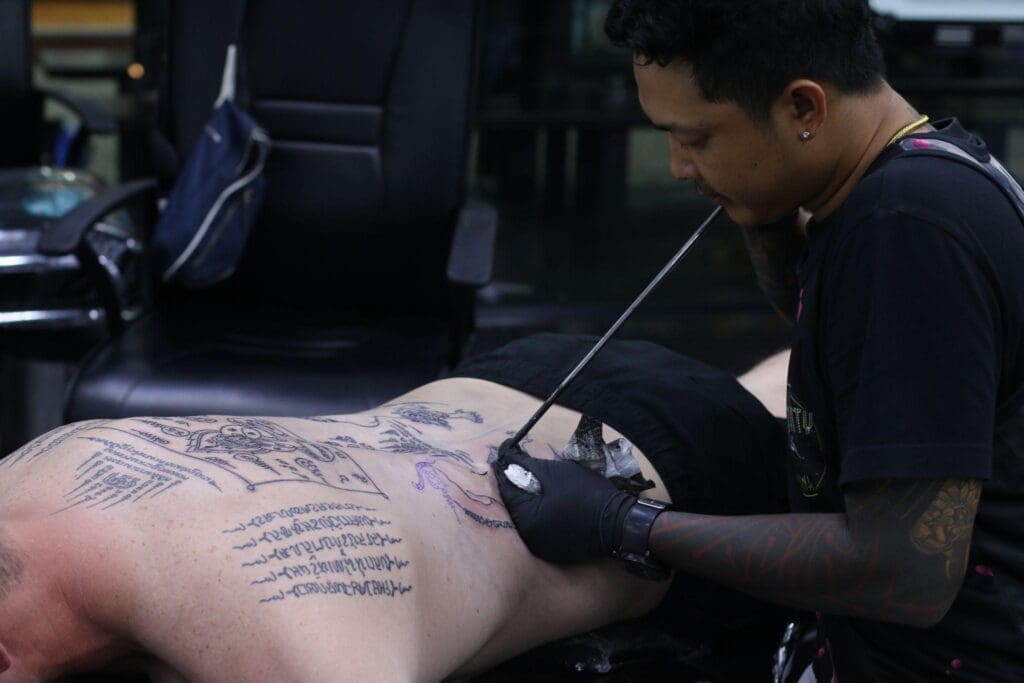

- Bamboo Stick (Khem Sak): The most iconic tool used in traditional Thai tattoos is a bundle of long, pointed bamboo sticks. These sticks are tied together, and the needles are made from sharpened bamboo.
- Ink Well (Khon Pha): Traditional Thai tattoo artists use a small container for holding the tattoo ink. Traditionally, it’s a coconut shell or ceramic dish.
- Natural Ink: Traditionally, tattoo ink was made from charcoal and snake venom. However, today, snake venom isn’t an ingredient. Today, the ink is made from a combination of soot, water and other secret ingredients that are thought to have magical and protective properties.
The Symbols and Meanings of Thai Tattoos
Traditional Thai tattoos (Sak Yant) feature a range of symbols with specific meanings. These tattoos are deeply rooted in Thai culture and Buddhism, and each symbol is believed to offer different forms of protection, luck or other spiritual benefits.


Here are some of the common Sak Yant symbols and their meanings:
- Hah Taew (Five Lines): This is one of the most popular and well-known Sak Yant/Thai-inspired tattoo designs. It consists of five horizontal lines, each with a Pali incantation. The Hah Taew is believed to provide protection and is often associated with invincibility.
- Gao Yord (Nine Peaks): This symbol features the nine peaks of Mount Meru, a sacred mountain in Hindu, Jain and Buddhist cosmology. The Gao Yord symbol is believed to offer various protective qualities.
- Paed Tidt (Eight Directions): This eight-pointed symbol represents the eight cardinal directions and symbolises protection in all directions and life’s path to enlightenment. It’s believed to bring good fortune and safeguard the wearer.
- Yant Putsoorn (Buddha’s Crown): This design features a crown-like shape and is considered sacred. It’s believed to provide protection, increase charisma and bring blessings from Buddha.
- Suea Koo (Twin Tigers): This design is a popular Muay Thai tattoo. The twin tiger represents the dual essence of power and fearlessness, embodying the fighter’s relentless spirit and indomitable courage.
- Lotus Flower: The lotus flower is a popular Buddhist symbol representing the Buddhist Eightfold Path and the purity of the soul. It has a different meaning depending on the colour of the flower (blue for wisdom and knowledge, white for spiritual and mental purity, and red for love and compassion).
- Thai Crocodile: This symbol represents endurance, strength and power and is a popular Muay Thai tattoo to protect fighters from injuries.
- Thai Turtle: According to Buddhist beliefs, Buddha was once reincarnated as a turtle. The turtle symbolises long life, good fortune and good health.
Book Your Next Tattoo With Celebrity Ink
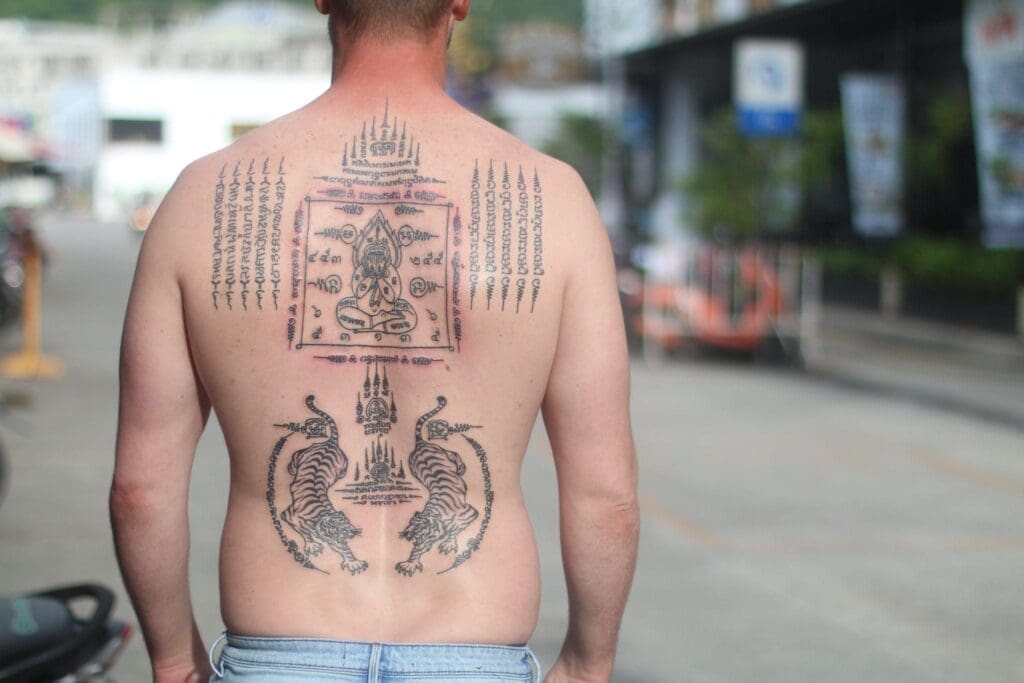

So, can you get a Sak Yant tattoo even if you’re not Buddhist? The answer is yes!
If you love the look and meanings behind Thai Sak Yant tattoos, why not book a consultation at your nearest Celebrity Ink studio? Our tattoo artists will sit down with you to discuss your tattoo and answer any questions you may have.
Ready to get inked? Contact us today to start your journey towards getting a Sak Yant tattoo!




